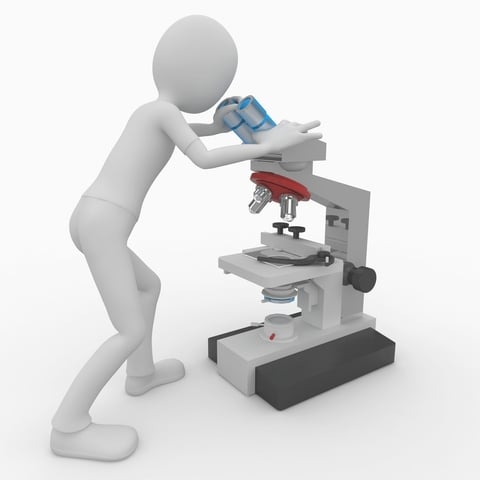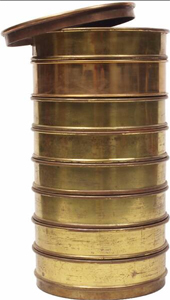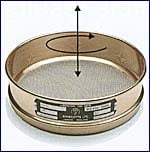Holy grail and Sieve Calibration
Sieve calibration is the final step in determining whether processes yield suitable end results. In other words:
- Is your concrete going to be strong enough?
-
Will you chocolates taste right?
-
Will your washing powder flow and dissolve as advertised?
-
Is there dangerous residue in your pill stock?
-
Will the “frack sand” keep the fractures open?
-
Is my salt of the correct grade?
If these are not correct, serious consequences could result (e.g. spoiled product, returned batches, rework or scrap).
Read More
Topics:
Calibration,
Particle Size Analysis,
Sieve Calibration,
Sieve Certification,
Sieve Testing,
Sieves,
Sieving Process,
particle sieze testing
In past ramblings on particle size analysis we have touched on shakers, ASTM standards, sieve checking, separating small particles, inhibitors like static charges and how to get sieve tests done. A couple of things that we rarely addressed.
Read More
Topics:
Sieve Shakers,
Particle Size Analysis,
Sieve Testing,
Quiet sieve shakers,
micron particles,
nanometer particles,
laser diffraction,
segmentation
Do You Re-Certify? Compare with a Master Stack? Check with Calibration Samples?
What Does Recertification Give?
The ASTM E-11 committee has done a great job of establishing three levels of testing. These levels show the probability of a sieve’s mesh to be within the permissible variations. These variations relate to the size of openings in wire-cloth used for test sieves.
Read More
Topics:
Sieve Shakers,
Mid-Point Sieves,
ASTM,
Particle Size Analysis,
Sieve Calibration,
Sieve Certification,
Sieve Testing,
Sieving Process,
Quiet sieve shakers,
RoTap,
sieving,
test sieve equipment,
sieve mesh
For several years, people in the test sieving business have been grousing about the difficulty of making sure that a test sieve certification is what they need. Anyone who is working with close tolerances in the smaller particle sizes, like 300 microns and smaller, have serious issues in matching results from test sieve to test sieve.
Read More
Topics:
Mid-Point Sieves,
Calibration,
Sieve Calibration,
Sieve Certification,
Sieve Testing,
Sieves,
Sieve Analysis

Sieve testing, as I have stated many times, is the Cinderella of particle size analysis because it delivers more value than expected from something that’s so easy to use and relatively inexpensive. However, the problem with standard sieving techniques using wire mesh sieves is that they begin to exhibit accuracy problems in the lower micron sizes.
Read More
Topics:
Sieve Shakers,
"Ask Art",
Sonic Sifter,
Micron-Sized Particles,
Particle Size Analysis,
Sieve Testing,
Sieving Process
Break the Curse of Particle Size Calculations
Every now and then I’ve had to calculate the results of a sieve test: I’d get the sieves and sample loaded on the shaker, run the shaker, then realize I’d have to start over because I forgot to get the empty weight of each sieve. Or I’d have to carefully brush out the sample onto a balance.
Read More
Topics:
Sieve Testing,
Sieving Process,
Sieve Analysis
Chapter One:
Jim’s life was dull. So, so dull. He spent his days surrounded by piles of sieves – his glamorous job was to calculate the ratio of particles left in the sieves of each stack after a sample of his company’s product was run through the stack using a sieve shaker. It was a job much like the one his cousin Hiram had, although he seemed to remember hearing that Hiram had found an easier way to do it.
Read More
Topics:
Particle Size Analysis,
Sieve Testing,
Sieve Analysis
The primary purpose of a sieve shaker is to provide motion to a sample in a test sieve.
An effective sieve shaker creates a motion that presents all the particles to all of the sieve openings and assists particles in passing through. This requires both rotary and vertical motion.
This process seems simple enough, but let's not be taken in.
Read More
Topics:
Sieve Shakers,
Particle Size Analysis,
Sieve Testing,
Sieves








